|
|
Welcome to my web page which outlines computing research that I completed
I must admit, that the reseach which I completed have a multidisciplinary
character, and in some areas is quite distant from computing. After all,
I am one of these few scientists in the world, who have a multidisciplinary
background and even managed to held university posts of associate
professor in two totally different disciplines. However, since you are
interested in my lecture notes on computing, probably you are only
interested in this part of my research, which somehow relate to computing.
Therefore, on this web page I outline only my computing-related research.
Other research that I completed (or carry out right now) are presented
elsewhere.
* * *
At the time of preparing of this web page (2003), I was the author of
71 scientific publications. They varied in many aspects, starting
from their topic, and finishing on the manner they were published.
For example, various my works were published in all possible forms,
starting from appearing in refereed scientific journals, through
popular periodicals (e.g. see my article from the popular OMNI
magazine (USA), February 1984, V.1. No. 6, page 87), and finishing on
university textbooks and published books. On this web page only
refereed publications are listed, means articles published in refereed
scientific journals (mostly from Poland), or papers presented
on refereed scientific conferences. When my computer-related
publications and subjects of my computing research are considered,
these include as follows (most recent first):
* * *
Research, like everything in our life, is also carried out according
to the philosophy of the researcher. In my research, I always try to
utilise the philosophy of ancient boat builders, who always
went into the trips in their own boat. Thus if the boat went down,
they also went down with it. (This philosophy is the outcome of my
military training, or more specifically the requirement from the
Polish army, that the bridge builders always went under the bridge
when a first tank rolled through it - for details see About Page.)
I personally believe that if this philosophy is adhered by all
researchers, we would not have so many bizarre creations, nor
so so many strange creators.
|
Note that you can see the enlargement
of each photograph from this web site, simply by clicking on this photograph.
When you finish with looking at such a photo enlarged, click
BACK to return to this page.
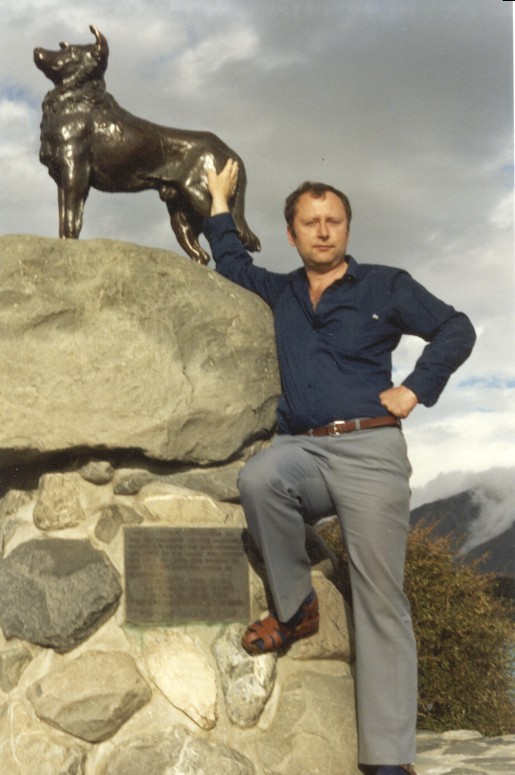 Fig. 1 With the
expansion of user-paid education, is research becoming
an underdog of teaching? Fig. 1 With the
expansion of user-paid education, is research becoming
an underdog of teaching?
|
1. Search engines:
Search engines are subjects of my current research.
I investigate them starting from 2002.
The goal that I set for this research is to design,
develop, and investigate the behaviour of a search
engine that is simple enough to be completed by
Cybertechnology students within four assignments
spread over two terms. Should you wish to learn
more about this research, see the description
and students handouts available on a separate page
Search Engine Research
(to visit click on it). You can also have a look on my publication
on this subject, namely:
[SE1] Pajak J.:
"Developing a
Search Engine Design for Research and Development in a Polytechnic
Teaching Environment".
A conscise paper presented on the NACCQ 16th Annual Conference
in Palmerston North, New Zealand, 6-9 July 2003.
Published on pages 363 to 366 of the Proceedings of the 16th
Annual Conference of the National Advisory Committee on Computing
Qualifications 6th - 9th July 2003, ISBN 0-473-09673-0,
(NACCQ, P.O. Box 11050, Hilcrest, Hamilton, New Zealand).
|
2. Natural language processing:
Natural language processing was a topic of my research
carried out at the University of Otago, Dunedin, during
the period from 1988 to 1990. Here is my
conference paper,
which presents results of this research. The editorial data of this
paper were:
[NL] Pajak J.: "Concept of a user-tuned information system
for natural language processing", ANZAME Conference, The University of
Western Australia, Perth, 29 November 1988 - 2 December 1988 (Abstracts,
page 73).
|
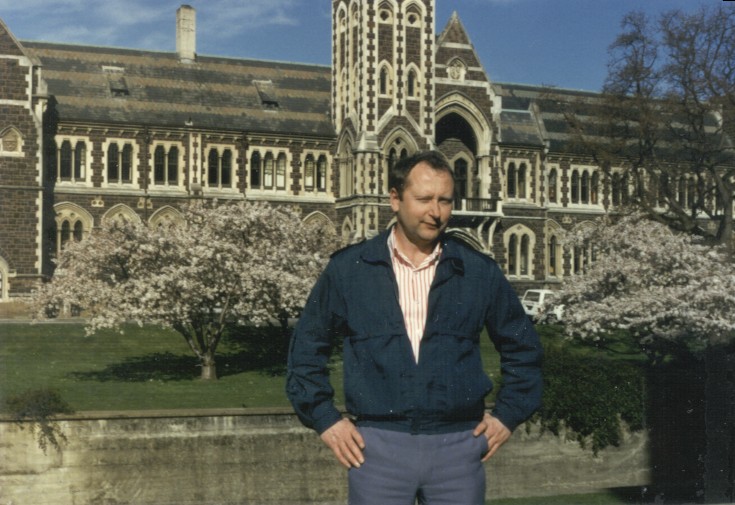 Fig. 2:
Myself in front of the historic registry building
at the University of Otago in Dunedin New Zealand.
This phtograph taken at the time when I was a Senior
Lecturer at this university and researched natural
languages processing.
Fig. 2:
Myself in front of the historic registry building
at the University of Otago in Dunedin New Zealand.
This phtograph taken at the time when I was a Senior
Lecturer at this university and researched natural
languages processing.
|
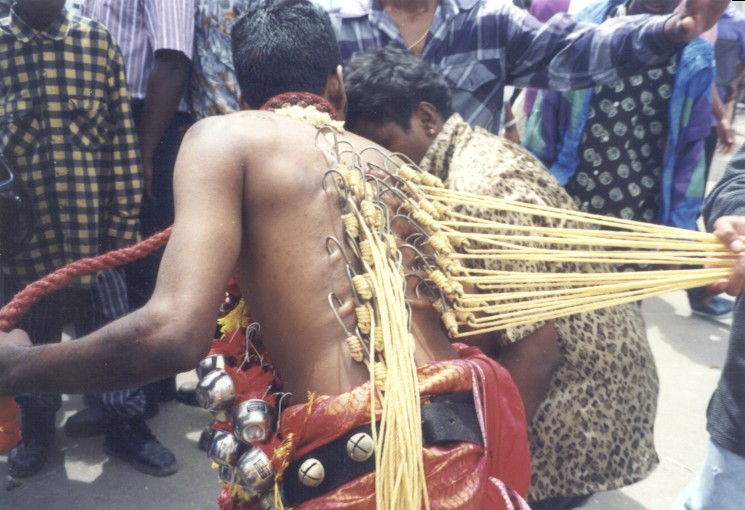 Fig.3: Here is what happens when someone is hooked to research.
Fig.3: Here is what happens when someone is hooked to research.
|
3. Doctoral thesis:
My degree is a Doctor of Technical Sciences (DrTSc).
I defended my doctorate on 6 July 1974, at the Technical
University of Wroclaw, Poland. It concerned Computer
Assisted Design (CAD). The topic of my doctoral thesis was:
"Analityczne badanie rozkladu temperatur we wrzecionach
obrabiarek skrawajacych ze szczególnym uwzglednieniem
wrzeciona tokarki" (i.e. "Analytical investigation of the
temperature distribution in machine tool spindles with
particular regard to lathe spindle"); Technical University
of Wroclaw, Poland; 6 July 1974, 146 pages.
|
4. JAP programming language:
Believe or not, I am the creator of my own programming language.
It was called "JAP" - abbreviation from the Polish "Jezyk Automatycznego
Programowania" (i.e. "Language of Automatic Programming"). I published
two refereed publications on this language, namely:
[JAP1] Pajak J.: "Autokod JAP do programowania tokarek sterowanych
numerycznie" (i.e. "The JAP language for programming of lathes
with numerical control"). Magazyn Technologa Przemyslu Lotniczego
i Silnikowego (Poland), No. 2/1973, pp. 16-19.
[JAP2] Pajak J., Pajak S.: "Jezyk automatycznego
programowania tokarek sterowanych numerycznie w ukladzie
NUMEROBLOK 21 T01" (i.e. "The automatic programming language
for lathes with NUMEROBLOK 21 T01 control system").
Mechanik, No. 4/1973, pp. 175-178.
[JAP3] Pajak J.: "Sistemy obrabotki yazykov dlya
maschinnogo programmirovaniya stankov c tsifrovym upravleniem"
(i.e. "Language processing systems for automatic programming
of numerically controlled machine tools"); Paper presented
(in Russian) at the Second National Scientific-Technical
Conference with Foreign Participation on "Program and Numerically
Controlled Machine Tools and Automation of Production",
Varna - Bulgaria, November 14-16, 1974; papers published by
NTC Sofia (Bulgaria), 1976, pp. 505-520.
|
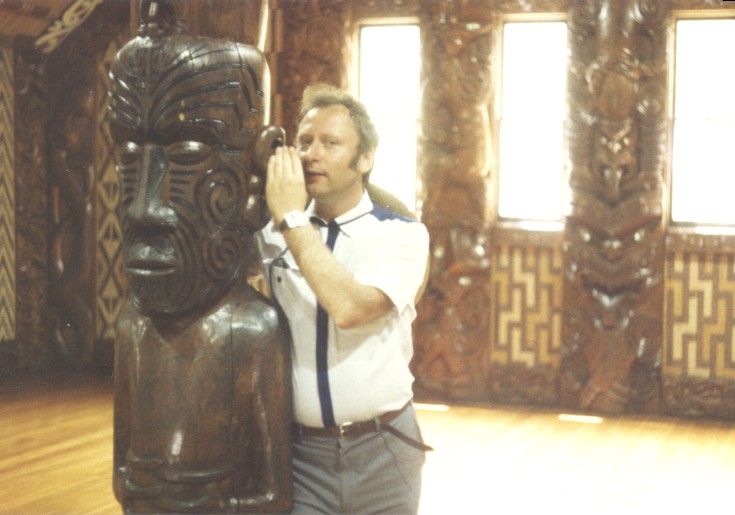 Fig. 4: We can tell everyone about outcomes of our research, but are we receiving any answer?
Fig. 4: We can tell everyone about outcomes of our research, but are we receiving any answer?
|
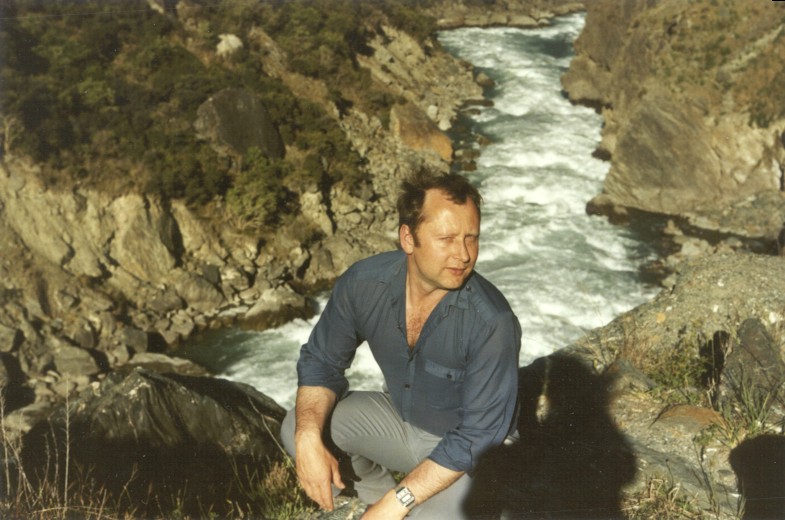 Fig. 5: Research are like streams:
start on no-where and finish in the ocean!
Fig. 5: Research are like streams:
start on no-where and finish in the ocean!
|
5. NEL language adaptation:
My experience with creating an own programming language (JAP),
was well utilised at the time when I was employed in the
computer factory MERA-ELWRO as a scientific advicer. One
of the research projects that I was supervising then,
was the adaptation to Polish computers ODRA series 1300,
a programming language which originally was prepared for
English computers ICL series 1900. The language was called
NEL and it belonged to the APT family of programming
languages (later it was renamed into NELAPT). This
language was developed at the National Engineering
Laboratory in Glasgow (hence the name NEL).
Apart from publishing a voluminous documentation
for this NEL language (3 large books),
I also published several scientific publications
which were explaining the scientific aspects of its
design, adaptation to Polish computers, and use.
Here are some of these publications:
[NEL1] Pajak J.: "Podstawy budowy jezyka 2CL do programowania frezarek
przy uzyciu maszyn cyfrowych Odra serii 1300" (i.e. "Structural
fundamentals of the 2CL language for the milling machines programmed
with use of Odra 1300 digital computers"). This was a paper for the
First Conference on "Progress in Machine Building Technology", Technical
University of Wroclaw, June 20-21, 1975 - see [C4] below. This paper
was later published as an independent article in the refereed journal
Prace Naukowe ITBM Politechniki Wroclawskiej No. 9/1975; Seria: Konferencje
No. 1, pp. 453-466.
[NEL2] Pajak J.: "NEL system do programowania obrabiarek
sterowanych numerycznie" (i.e. "NEL system for programming of
numerically controlled machine tools"). Informatyka (Poland),
No. 11/1975, pp. 17-19.
[NEL3] Pajak J.: "Wspólpraca postprocessora dla obrabiarki
sterowanej numerycznie z programami przetwarzajacymi implementacji
systemu NEL na komputery Odra serii 1300" (i.e. "Options in the
cooperation of postprocessor programs for NC machine tool, with
processing programs in implementation of the NEL system on Odra
1300 computers"). Paper given at the Science-Technical Conference
"Progress in Production Technology", Kolobrzeg, Poland, 21-23
September 1978; volume 2 papers, pp. 312-316.
|
6. Thermal graph method:
The "thermal graph" is a version of the computer modelling
and calculation method and software, usually called the "finite elements".
But otherwise than the finite elements, which are
used for stress analyses and for modelling, the thermal graph
is applied mainly to thermal phenomena (i.e. for modelling
of thermal phenomena, and for calculation of temperature distributions).
I developed this thermal graph method myself, and published
several scientific articles and papers on it. Here are some
of these:
[TG1] Jedrzejewski J., Pajak J.:
"Metoda grafu termicznego do numerycznego wyznaczania rozkladów
temperatur w elementach maszyn" (i.e. "Thermal graph method
for numerical determination of temperature distribution in
machine elements"). Prace Naukowe Instytutu Technologii Budowy
Maszyn (ITBM) Politechniki Wroclawskiej (Poland), Nr 4, Seria:
Studia i Materialy, No. 4/1971, pp. 87-110.
[TG2] Jedrzejewski J., Pajak J.: "Numerische
Bestimmung der Temperaturfelder in Baugliedern von
Werkzeugmaschinen mittels eines thermischen graphes"
(i.e. "Use of a thermal graph for numerical determination
of temperature distribution in elements of machine tools"),
paper presented (in German) at the 23rd General Assembly
of CIRP in Bled, Yugoslavia, 26 August to 1 September 1973,
16 pages.
[TG3] Jedrzejewski J., Pajak J.: "Bestimmung
der Temperaturfelder in Baugliedern von Werkzeugmaschinen"
(i.e. "Thermal investigation of machine tool components"),
Werkzeug Maschine International (West Germany), Forschung
Konstruktion Fertigung, No. 5/1974, pp. 61-66.
[TG4] Pajak J.: "Algorytm obliczania rozkladów temperatur
na osiowo-symetrycznych elementach obrabiarek" (i.e.
"Algorithm of calculation of temperature distribution
in rotary machine tool elements"). Prace Naukowe ITBM
Politechniki Wroclawskiej, No. 16, Seria: Studia i
Materialy No. 13/1976, pp. 79-98.
[TG5] Jedrzejewski J., Pajak J.: "Metod opredeleniya
termicheskih pokazatelei shpindel'nykh uzlov metallorezhushchikh
stankov" (i.e. "A method for the thermal factors determination
in machine tool spindle units"). Paper presented (in Russian)
at the 3rd National Conference "Automatization 76", Albena,
Bulgaria, 5-9 October 1976; published in volume 2 papers, pp. 134-139.
[TG6] Bassenge Ch., Pajak J.: "Numeryczne
metody obliczania pól temperatur w elementach maszyn"
(i.e. "Numerical methods for temperature fields calculation
in machine elements"). Prace Naukowe ITBM Politechniki
Wroclawskiej, No. 17, Seria: Studia i Materialy No.
14/1978, pp. 5-27.
* * *
I should mention, that the thermal graph method in years
1970 to 1982 become the basic analytical tool for an entire
team of researchers which investigated thermal phenomena at
the Institute of TBM (Machine Building Technology) from the
Technical University of Wroclaw, Poland, where I worked at
that time. Probably this team existed and operated longer,
though after my (political) emmigration to New Zealand in
1982 I lost contact with it.
|
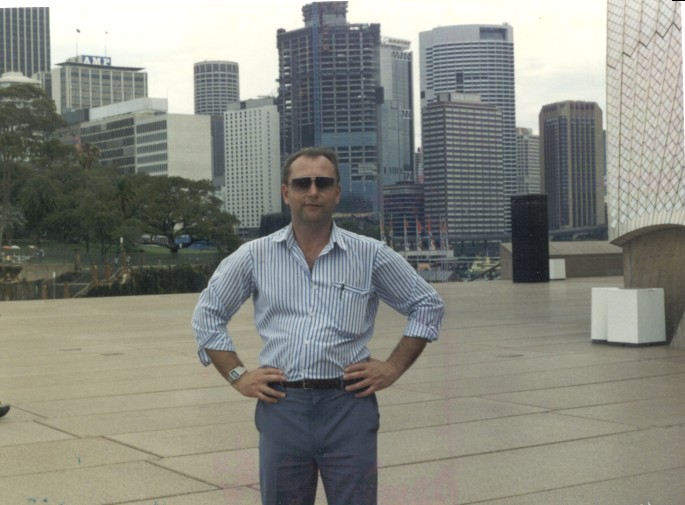 Fig. 6: Does "new and flashy" mean good?
Fig. 6: Does "new and flashy" mean good?
|
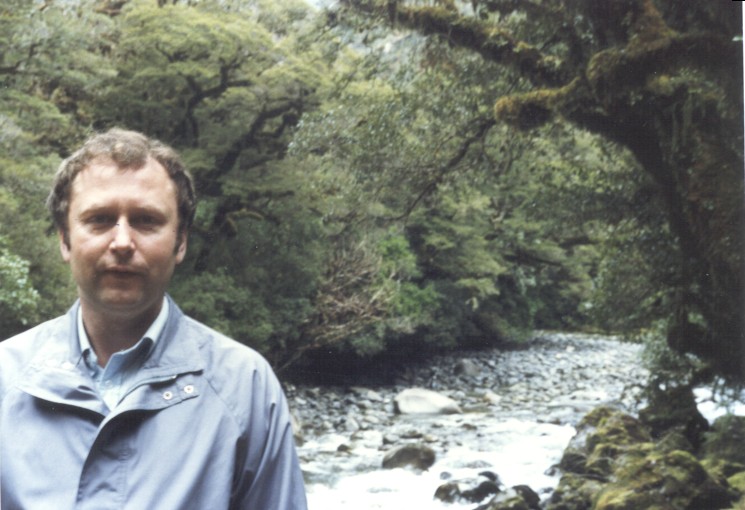 Fig. 7: Starting new research is like getting into a dense bush.
Fig. 7: Starting new research is like getting into a dense bush.
|
7. Engineering Software:
A lot of my former research involved Engineering Software.
Although Engineering Software is concerned with tasks quite
similar to these of the discipline of Software Engineering,
both of them differ in their objectives. The main goal of
Engineering Software is to produce various software packages
for specialised Engineering applications. When I was employed
as a scientific adviser to then a largest computer producing
factory in the Eastern Europe, called MERA-ELWRO, a significant
part of my responsibilities included the organisation and
expansion of a library of Engineering Software for computers
produced at that factory. Similar duties I carried out also
in my next job as a scientific consultant in a Bus and Truct
Producting Factory called POLMO-JELCZ. Here are some of my
papers from this area:
[ES1] Pajak J.: "System obliczen inzynierskich przykladem oprogramowania
o zwiekszonej efektywnosci pracy" (i.e. "The engineering software
system as an example of the problem-oriented language of higher
work effectiveness"). It was originally a paper presented during
the Industrial Assembly on "Increase in machining efficiency" at
the Technical University of Wroclaw in Rydzyn near Leszno, Poland,
21-22 June 1979. The paper was later published as a scientific
article in the refereed journal Prace Naukowe ITBM Politechniki
Wroclawskiej, No. 22/1979, Seria: Konferencje No. 4, pp. 147-159.
|
8. Computerised numerical control (CNC):
Computerised numerical control (CNC) and numerical control (NC)
are subjects that are on the border between hardware and software.
I did a lot of research on the software side of CNC and NC.
Here are various refreed articles that I published in these areas:
[CNC1] Pajak J., Pajak S.: "Programowanie przebiegu
obróbki na tokarkach ze sterowaniem numerycznym systemu
KÖPING NC 105" (i.e. "Programming of NC lathes with KÖPING NC 105
control system"). Mechanik (Poland), No. 1/1973, pp. 11-12
[CNC2] Pajak J.: "Zamiana kodów na tasmach perforowanych
do obrabiarek sterowanych numerycznie" (i.e. "Use of computers
for codes exchange in punched tapes for numerically controlled
machine tools"). Mechanik, No. 2/1974, pp. 86-88.
[CNC3] Pajak J., Sereja B.: "Uzytkowanie tokarki
uchwytowej TZC-32N ze sterowaniem numerycznym" (i.e. "Use of
NC chuck lathe, type TZC-32N with numerical control").
Mechanik, No. 4/1974, pp. 188-190.
|
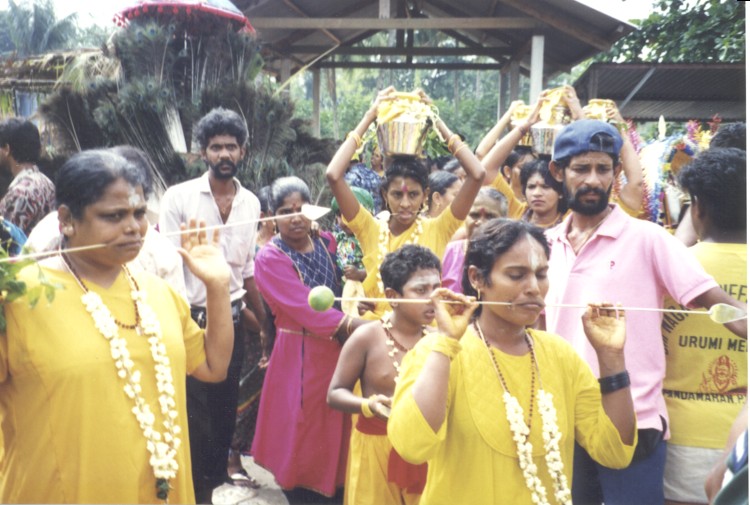 Fig. 8:
Research may hurt!
Fig. 8:
Research may hurt!
|
|
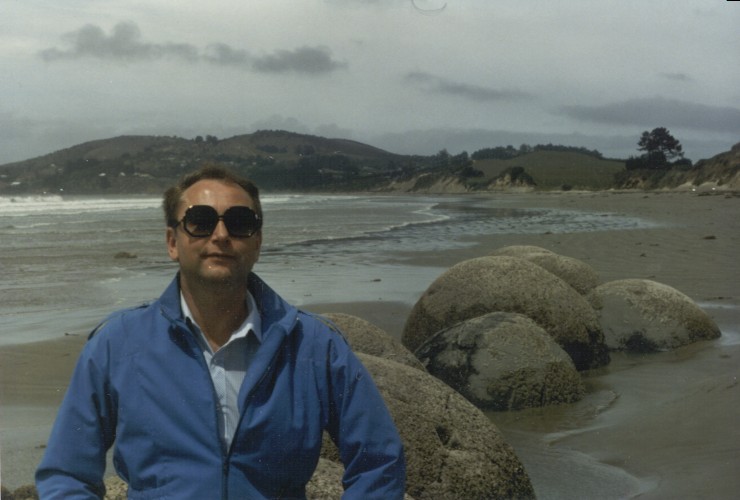
Fig. 9: Spherical mysteries from Moeraki.
Business people say "money lie on streets". I would say "entrance doors
to your success in research can be found everywhere".
|
9. Computer-Assisted Design (CAD):
Computer Assisted Design was one of the main areas of my
initial involvement in computing. Here are my papers on
this subject:
[CAD1] Pajak J.: "Wspomagane komputerowo projektowanie zarysu
krzywki plaskiej" (i.e. "Computer Assisted Design of plane
cam profiles"), Przeglad Mechaniczny, No. 18/1980, pp. 5-9.
|
|
10. Calculators:
When I worked as a scientific advicer to the computer-producing
factory MERA-ELWRO, one of numerous small projects I was involved
in, was Research and Development of a calculator, the production of
which was to be started by this factory. My task was to process
available information about the most desirable features of such
calculators then on market, and to develop requirements and a design
specification for a calculator that would have all these features.
The results of my participation in this R-and-D project turned
beneficial to everyone. The factory produced a calculator,
which turned into a market success. My students since that time
have a continuous supply of calculator-type assignments.
I gained the inspiration to start later a collection of
software calculators, which you can see via this web site.
In turn my list of publications gained another scientific article:
[C] Pajak J.: "Budowa i dzialanie
kalkulatorków elektronicznych" (i.e. "Construction
and operation of electronic calculators"). Przeglad
Mechaniczny (Poland), No. 17/1979, pp. 5-9.
|
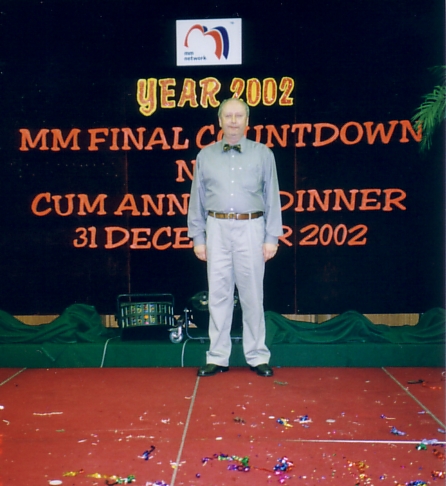 Fig. 10: Lets us do research, when there is a time
for research, lets us celebrate, when there is a reason
for celebrations!
Fig. 10: Lets us do research, when there is a time
for research, lets us celebrate, when there is a reason
for celebrations!
|
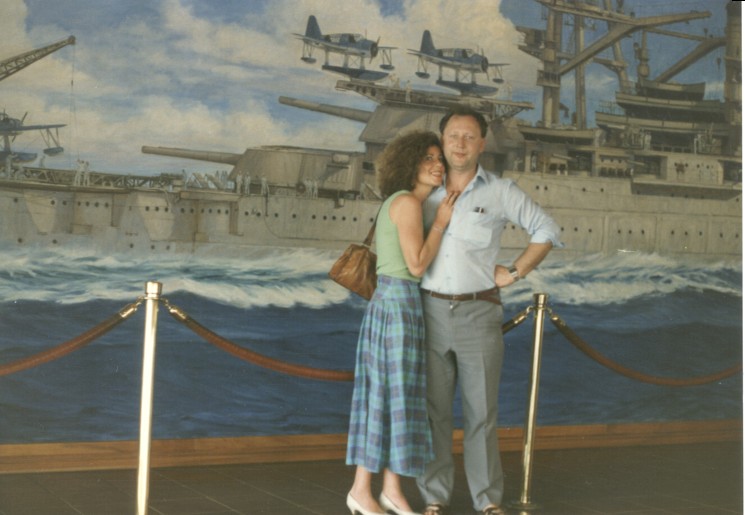 Fig. 11: My own Pearl Harbour.
Fig. 11: My own Pearl Harbour.
* * *
A renown scientist - probably from my generation,
was asked for advice by inquisitive students
wanting to benefit from the accumulation of
his scientific wisdom.
Professor, what is better to have, a spouse or
a lover. Well, replied the wise professor,
best is to have both. You tell your spouse
that you spend some time with the lover, you
tell the lover that you spend some time with
the spouse, while yourself, you walk, walk,
straight to the library, where you do your
research!
|
11. Proverbs all corners of the world:
Proverbs from all corners of the world are my scientific passion.
I believe that they are the "time capsules of folk wisdom".
I collect various proverbs and currently even write a book
about them. In spite that some may believe that proverbs
do not have much to do with computing, actually they do
- and a lot. In near future (when my book is finished)
I am going to prove this. As for the time being I propose
to look at the following Malaysian proverb, which in Bahasa
Malaysia reads:
"Penyu bertelur beribu-ribu seorang pun tiada tahu, ayam
bertelur sebiji pecah khabar sebuah negeri", and which
after the translation into English means
"A turtle lays thousands eggs and is silent, while
a hen lays only a single egg and a whole village must know";
and then consider how relevant this proverb is for descibing
the behaviour of many our fellow programmers, computer scientists,
database or network managers, etc.
|
Notice that the majority of photographs presented on this
web page
either show myself (dr Jan Pajak) in several different
countries and in various life situations, or were taken by me.
The most recent update of this Web site: 23 July 2005.
2911

|

